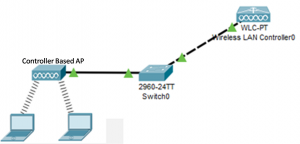What is Wireless Access Points

In the LAN (Wired Network) each client connects to a switch. The switch is the center point for each client to gain access to the network. The wireless Access Points also connects to the switch. Wireless clients discover nearby APs using their wireless NIC. The wireless Access Points are advertising their SSID for the client. Clients select wireless Access Points and attempt to connect using authentication. After being authenticated, wireless users can access network resources. The wireless Access Points has two types: autonomous APs and controller-based APs.
Autonomous APs
Autonomous APs are useful in situations where only a couple of APs are required in the network. We can configure autonomous APs using the Cisco CLI or a GUI. We can control multiple APs using wireless domain services (WDS) and managed using Cisco Works Wireless LAN Solution Engine (WLSE). The home router is an example of an autonomous AP. In the case of increased wireless demands, more APs would be required. Each AP has its network and operates independently from other APs. The APs can be independently configured. The figure below illustrates the Autonomous APs.
Controller-Based APs
It is server-dependent APs that not need any initial configuration. Controller-based APs are helpful where many APs are required in the network. When a new AP is added to the network, the controller automatically configures and manages the APs. The benefit of the controller is that it can be used to manage many APs. The figure below illustrates the controller-based APs.



Introduction to Wireless Antennas » Networkustad
October 25, 2020 @ 11:12 pm
[…] wireless antenna also an important element of APs. The business class APs uses external wireless antennas for better results. Cisco uses different […]